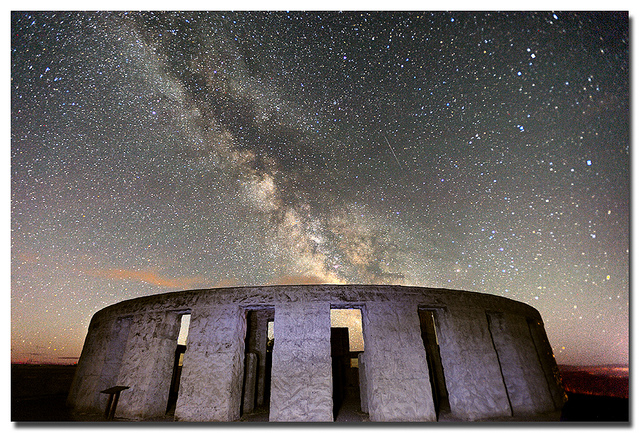A few days ago Delilah S. Dawson wrote a post on Chuck Wendig's blog, Terribleminds, about how she writes a book. It's awesome! I wish I'd read something like it when I was starting out.
Delilah concentrates on writing for traditional publishers but a large part of her post is applicable to indie's as well. Here's a few of the points that resonated with me.
How To Write A Book
What follows is loosely based on Delilah S. Dawson's excellent post 25 Steps to Being a Traditionally Published Author: Lazy Bastard Edition.
1. Writers write
This is less a 'how you do it' point than it is what to expect. Chances are, putting your posterior in a chair every day for several hours is not what you'll want to do. (Not to mention the back pain.)
There will usually be something more appealing to work on than writing. Even housework will begin to seem fun by comparison (at least, this has been my experience, and I loathe housework).
It helps to be disciplined, to make a schedule and stick to it. Neil Gaiman writes:
"If you only write when you’re inspired you may be a fairly decent poet, but you’ll never be a novelist because you’re going to have to make your word count today and those words aren’t going to wait for you whether you’re inspired or not.
"You have to write when you’re not inspired. And you have to write the scenes that don’t inspire you. And the weird thing is that six months later, a year later, you’ll look back at them and you can’t remember which scenes you wrote when you were inspired and which scenes you just wrote because they had to be written next.
"The process of writing can be magical. … Mostly it’s a process of putting one word after another." (Neil Gaiman on How Writers Learn and Why First Drafts Don’t Matter)
Whether you write when you first get up in the morning, after you get your first jolt of caffeine (my preferred time when I'm writing a first draft), or sometime else, the important thing is to set up a routine and stick to it.
(See: 6 Ways To Write Every Day)
2. Don't give up.
Even if it seems you're writing crap, keep writing.
When you come back and look at your work the next day, it won't be as bad as you thought. In fact, as Chuck Wendig recently said, it might be good (see his post (adult language -->): Yes, Virginia, You Can Totally Force Art).
Conversely, you'll have days where you think everything you write is brilliant. Unfortunately, chances are, the next day when you look at what you did you'll think it's simply average.
If you've never written a book before, the important thing is simply to finish the manuscript even if you know its destined to be lovingly interred under your bed. After all, it counts toward your 1,000,000 words.
Incidentally, if you haven't come across the idea that every writer has to write 1,000,000 words before they can produce a truly good book, here's a quotation from that master of the writers' craft, Ray Bradbury:
"The Muse must have shape. You will write a thousand words a day for ten or twenty years in order to try to give it shape, to learn enough about grammar and story construction so that these become part of the Subconscious, without restraining or distorting the Muse." (Zen in the Art of Writing)
In order to write well we must first write. If that means we write badly then so be it. After all, one must write to have something to edit!
As I searched for the Ray Bradbury quotation, above, I came across a couple more:
"Quantity produces quality. If you only write a few things, you’re doomed." (Ray Bradbury)
"The way you define yourself as a writer is that you write every time you have a free minute. If you didn’t behave that way you would never do anything." (John Irving)
3. To write you must read
I can say from personal experience both that it's tempting to stop reading when you're writing--I've become a miser with time and try to squeeze minutes and seconds from my day any which way I can--and that eliminating your reading time is one of the worst things you could do.
Reading feeds you. When you write it's like your muse is running a marathon. She needs to be fed and one of the main ways that happens is through reading.
Also, though, one needs to take walks, meet people and enjoy the creative efforts of others.
Another important function of reading is that it helps us learn to become better writers. Often I'll sense that something is lacking from a particular scene and, when I read, I'll have a revelation and understand what's missing from my own work. Delilah writes:
"It [reading] helps keep your mind nimble and constantly growing new neural connections. What the author did right, what they did wrong--your brain just soaks it up like Kraken rum in a sponge cake. Read other genres, read the popular books that you think probably suck just to see what makes them so appealing. Read nonfiction. Read writing books. When you’re getting ready to revise or query, read books similar to your own to finesse what makes yours special. But always be reading ..."
4. Finish what you start
I guarantee you that at some point when you're writing your book--this will probably happen more than once--you'll have an almost irresistible desire to start writing another story. You'll have a grand idea, a compelling concept will pop into your noggin, and it'll be so beautiful and wonderful that you'll want to abandon the plodding piece of so-and-so your current manuscript has morphed into and work on it.
Don't!
As Admiral Ackbar said: It's a trap!
Yes, absolutely, write down the idea--I have an idea book where I write down story concepts--but then go back to your work in progress. Delilah writes:
"You’ll never learn anything if you don’t finish a book. At first, you might not know what your process is. Are you a plotter? Do you ride by the seat of your pants? Do you like Scrivener or longhand or writing on your bathtub wall in pig blood? You’ll never know what works until you’ve written one complete book. Your process might change later. But for now, focus on writing a really crappy first draft in whatever way appeals and don’t stop until the ride is over."
5. First drafts are vomited up rather than written down
I don't let anyone see my first drafts. They aren't pretty.
I've begun to think of my first drafts as zero drafts. They give me a chance to wallow in an idea, seeing where it's going to lead. It gives me a starting place, a structure.
Delilah writes, and I agree 100%:
"Looking for a leg up on improving your writing at any point of this writing thing? Go read ON WRITING by Stephen King, which is a game changer and, for me, a life changer. Then read BIRD BY BIRD by Anne Lamott. Then read SAVE THE CAT by Blake Snyder."
6. When you finish your first book celebrate but don't send it out, not yet
Finishing your first book is a big deal. Treat yourself. Tell your friends. Go out and celebrate.
But all you have at this point is a first draft that needs a lot of polish. But, before you start editing, you need distance from your manuscript. You need to be able to read it with new eyes, and that'll take time.
How much time? Well, that depends on who you talk to. If I remember correctly, Stephen King says to give it 6 weeks. I'd say, if you can, give it at least a month. In the meantime, though, don't stop writing. Start on a short story or begin work on your next book.
7. Revise
You've set your manuscript aside for a few weeks, now you're starting on your first revision, your second draft.
Everyone's different, but I find it usually takes me (at least) twice as long to do my first revision as it does to write the first draft. Why? I'll let Delilah explain:
"Don’t read it like it’s your precious perfect baby darling. Read it like it’s your worst enemy’s magnum opus and your job is to expose its every tragic flaw. Are the characters flat? Does the dialog pop, or is the dialog just you using the characters’ mouths for your own assplaining? Is there purple prose? Does the action compel you to keep reading? Is there a satisfying story arc? Do you switch POV or tense? Because, honestly, I do that all the damn time. If you get bored reading it, so will your audience."
The first draft is just the beginning. The first draft is the easy part.
The first draft is where you get to pluck ideas out of your imagination and write them down, creating connections, dreaming up people and places and adventures. The second draft, on the other hand, is where things get real and you have to straighten hems and make sure everything is presentable and ready for company.
8. Polish
Don't stop with revision. Once you've got the big things figured out go through your manuscript again looking for anything that weakens it. (Here's a terrific article on the subject: Self-Editing for Everyone Part 4: The Weakeners.) Look for words you don't need, words that don't add anything to the meaning of your prose.
Although there's nothing wrong with adverbs in and of themselves, often adverbs are used in ways that bloat and weaken sentences. Stephen King has an excellent discussion of this in On Writing.
Also, I would suggest that you not only read the manuscript aloud to yourself but that you run it through a text-to-speech program that will read it back to you. When I hear my words read back to me I find a host of typos.
9. As other people for input
Who you ask, how many people you ask, is up to you but you definitely need to give your manuscript to someone else to read.
Dean Wesley Smith, a professional writer with many years experience, gives his manuscripts to a first reader and then sends them off. Other people like running their manuscripts past their writing group.
Try out different things and find out what works for you.
Try out different things and find out what works for you.
Also, if you can afford it, there are many excellent professional developmental editors who can help you make your manuscript stronger.
Here are some links to previous articles of mine on the editing and critiquing process:
10. Start writing your next story
After you've polished your story and have sent it out--whether you've published it yourself or sent it to traditional publishers--start on your next story!
Delilah S. Dawson's article, 25 Steps To Being A Traditionally Published Author, goes on to list the steps she took in her adventure to becoming a traditionally published author. It's a great article.
Happy writing!
Photo credit: "At Lands End" by Sharon Mollerus under Creative Commons Attribution 2.0.










